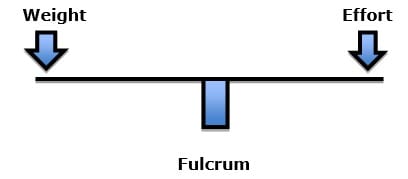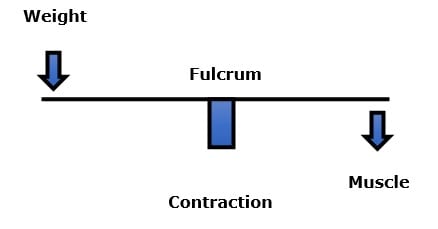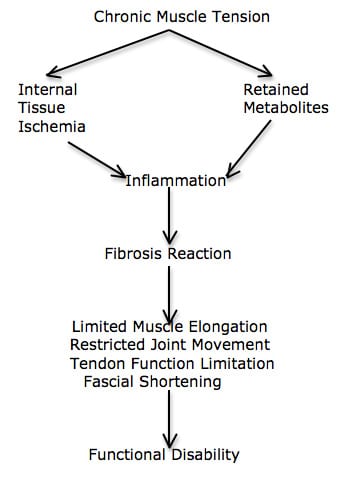Posture and Pain
Analogies that are often used by chiropractors include:
- If one walks on the edge of their shoe, the shoe sole will wear out at the weight-bearing portion quicker than other parts of the sole.
- If an automobile wheel alignment is not optimal, then the excessively stressed wheel will wear out quicker than the other wheels.
The chiropractic analysis of the human frame involves a postural assessment. The chiropractor is assessing human alignment. Chiropractic interventions, including spinal adjustments (specific correctional manipulations), are often intended to correct postural alignments.
The alignment issue is well explained by James Oschman, PhD, in his book Energy Medicine, The Scientific Basis (1):
Gravity is the most potent physical influence in any human life.
“Gravity pervades our bodies and our environment and affects our every activity. All of the structures around us - our homes, furniture, buildings, machinery, plant, and animal, - and our own bodies, are designed to function in a world dominated by gravity.”
“To introduce the therapeutic significance of gravity, we summarize the work of Joel E. Goldthwait and his colleagues at Harvard Medical School.” “A surgeon in Boston and founder of the orthopaedic clinic at the General Hospital, Goldthwait developed a successful therapeutic approach to chronic disorders. The aim of his therapies was to get his patients to sit, stand, and move with their bodies in a more appropriate relationship with the vertical. After years of treating patients with chronic problems, he concluded that many of these problems arise because parts of the body become misaligned with respect to the vertical.”
“Goldthwait documented with X-rays a build-up of calcium deposits around the vertebrae of individuals with chronic arthritis, and observed that these deposits can diminish when the individual acquires a more vertical stance. His therapeutic approach corrected many difficult problems without the use of drugs. He viewed the human body from a mechanical engineering perspective, in which alignment of parts is essential to reduce wear and stress. He pleaded with physicians to recognize and correct misalignments to prevent long-term harmful effects.”
“The basic principle of gravitational biology is known to any child who plays with blocks. The center of gravity of each block must be vertically above the center of gravity of the one below, to have a stable, balanced arrangement. If the center of gravity of one block lies outside of the gravity line, stability is compromised.”
“Likewise, there is only one stable, strain-free arrangement of the parts of the human body. Any variation from this orientation will require corresponding compensations in other parts of the support system.”
“Misalignment of any part will affect the whole system, and that restoration of verticality is a way to address a wide variety of clinical problems.”
Dr. Goldthwait pleaded for everyone to pay more attention to the ways they hold and move their bodies in relation to the gravitational field.
Chiropractors consider abnormal postural alignments to have three primary orthopedic consequences that are related to a patient’s pain. They are:
- Weight
- Load
- Chronic Muscle Counterbalance
Weight
A recent study (February 10, 2020) from the journal Menopause, notes that obesity “is positively associated with low back pain.” The authors state (2):
“Higher body mass is thought to increase pressure on the lumbar vertebrae, discs, and other back structures, causing low back pain.”
The weight premise is simple and logical. The spinal structures that bear weight are the same structures that initiate the pain signal to the brain (3, 4). These structures are primarily the intervertebral disc and the facet joints. More weight increases the stress on these structures, increasing irritation, inflammation, and pain.
Weight reduction is a simple and proven strategy for spine pain reduction. Weight reduction advice to patients is universal from health care providers. Yet, achieving weight reduction is elusive. On March 3, 2020, the World Health Organization presented the grim global statistics (5):
- Worldwide obesity has nearly tripled since 1975.
- In 2016, more than 1.9 billion adults, 18 years and older, were overweight. Of these over 650 million were obese.
- 39% of adults aged 18 years and over were overweight in 2016, and 13% were obese.
- Most of the world’s population live in countries where being overweight and obese kills more people than being underweight.
- 40 million children under the age of 5 were overweight or obese in 2018.
- Over 340 million children and adolescents aged 5-19 were overweight or obese in 2016.
The obesity statistics from the United States are more grim than the global numbers. An Associated Press headline from February 18, 2020 notes (6):
U.S. Obesity Rate 42% and Rising
This article makes these points:
- “Obesity – which means not merely overweight, but seriously overweight – is considered one of the nation’s leading public health problems.”
- About 4 in 10 American adults are obese.
- About 1 in 10 American adults are severely obese.
- The obesity rate in 2016 was 40%.
- Adult obesity rates are trending up.
- “Half a century ago, about 1 in 100 American adults were severely obese. Now it’s 10 times more common.”
- The obesity rate has risen about 40% in the last two decades.
- Increased obesity means that “more Americans will get diabetes, heart disease, and cancer.”
Successful weight reduction would undoubtedly help spinal pain as well as other public health concerns. Although weight is clearly an issue in back pain, it is not the most important issue. More important than weight is load, as discussed below.
Load
Upright posture is a first-class lever mechanical system, such as a teeter-totter or seesaw (7, 8).

In the first-class lever, the fulcrum is located between the weight and the effort.
Notice that the weight is not positioned directly above the fulcrum. Rather, it is located at a distance away from the fulcrum. This distance is called a lever arm.
The effective weight on the fulcrum is the actual weight multiplied by the lever arm. An actual weight of 10 pounds positioned at a distance of 10 inches away from the fulcrum will impart to the fulcrum an effective weight of 100 pounds. The effective weight at the fulcrum is also known as the load. The load is far more influential on the fulcrum than is the weight.
The weight-bearing joints of the spinal column are the intervertebral disc and the facet joints (9). There is an optimal pivot motion between these spinal joints known as the instantaneous axis of rotation. Any abnormality of the instantaneous axis of rotation is associated with increased spinal pain syndromes (10, 11, 12). Chiropractors refer to abnormal instantaneous axis of rotation between spinal joints as a spinal subluxation or subluxation complex. All changes in load influence the instantaneous axis of rotation.
A great discussion pertaining to weight and load is found in Katy Bowman’s 2017 book Move Your DNA. Ms. Bowman is a biomechanics specialist, and she notes (13):
“Our bodies respond to mechanical input.”
The conversion of mechanical input to “biochemical processes is called mechanotransduction.”
“Gravity is one force your body responds to constantly.”
“The loads created by gravity depend upon our physical position relative to the gravitational force.”
The load created by gravity differs depending on alignment with the “perpendicular force of gravity.”
“We experience load 100 percent of the time.”
“Every unique joint configuration, and the way that joint configuration is positioned relative to gravity, and every motion created, and the way that motion was initiated, creates a unique load that in turn creates a very specific pattern of strain in the body.” This is called “load profile.”
Every load creates a “unique cellular deformation.”
“It’s not the weight that breaks you down, it’s the load created by the way you carry it.”
“Loads are often oversimplified to ‘weight’ because it makes them easier to understand, but there is much more going on with your sore knee (or foot, or back, or pelvic floor) than your weight.”
“Weight is not the be-all and end-all of loads. When you want to improve your health, it’s much more important to consider how you carry your weight than to spend hours contemplating the lone data point that is Your Weight.”
“No matter the activity, when it comes to health, of utmost importance is the loads created.”
“Every rate, size, and angle at which a force is being applied creates a unique environment for your cells.”
“The timing and rates of loads are important because loads are occurrences over a period of time.”
Each tissue type responds differently to a load, yet “they are all connected, which means that a load you perceive as only happening in one part of your body is actually affecting all other parts of you, and affecting each part uniquely.”
“We should recognize our lack of health as a sign of a broken (mechanical) environment.”
“You can eat the perfect diet, sleep eight hours a night, and use only baking soda and vinegar to clean your house, but without the loads created by natural movement, all of these worthy efforts are thwarted on a cellular level, and your optimal wellness level remains elusive.”
“Human diseases are repeatedly explained to us in terms of their chemical or genetic makeup; meanwhile, we’ve completely ignored the load profile that the function of our body depends upon.”
“Whether out of convenience or ignorance, we have failed to address the habitat [“habitual position relative to gravity”] in which our genes dwell, and the impact of the way we move on the state of our health.”
“Movement, like food, is not optional.”
“Movement is what most humans are missing more than any other factor, and the bulk of the scientific community has dropped the ball.”
“A decrease in movement is associated with decreases in muscle size, vascularization, and the sensitivity in your proprioceptive system.”
“Movement, position, and resting state of our musculoskeletal system are huge influencers of our mechanical environment.”
“All movement and lack of movement create subtle differences in outcome in individuals and their genes.”
The amount your joints move is integrated by your sensory system. “Movement provides information for the body. Movement is an environmental or epigenetic factor. Our movement environment has been polluted.”
“If you want your health to change, you must change the way you move.” Even tiny adjustments to your loading “can be worth millions in unspent healthcare dollars and bring about tremendous relief from your load-induced ailments.”
“Tissues that spend most of their time in a fixed position will adapt to that position by making alterations that are fairly permanent.”
“An under-moved area of the body will experience increases in the connective tissues.” The author calls these “extra-connected” areas of the body “sticky spots.”
Immobility-induced connective tissue growth creates a binding and “behaves much like scar tissue.”
“On the cellular level, a sticky spot interferes with the transmission of forces throughout your tissues—mechanical signals that give cells context about loads placed upon them as well as position.”
When a joint has a sticky spot, “you compensate by moving other joints,” which may “come with a heavy dose of damage.” Areas just outside of the sticky spot “experience unnaturally high loads.”
Exercise cannot come close to restoring the tissues already adapted. “Exercise is good, but not good enough.”
“We need a tool to measure the loads, both on the whole body and on every body part. The tool I use is alignment.”
Muscles become physically shorter in response to “chronic joint positioning.”
This discussion by Bowman explains much of chiropractic:
- Load is clinically more important than weight. Overweight/obese patients have a lot of trouble trying to lose weight, but chiropractors can quickly and effectively improve the load on the joints by improving postural alignment.
- Soft tissues adapt to abnormal loads over time. Bowman refers to these soft tissue changes as “sticky spots.” Others refer to them as an “abnormal instantaneous axis of rotation.” Chiropractors refer to them as the “subluxation.”
Chronic Muscle Counterbalance
Understanding that upright human posture is a first-class lever system is important. Understanding that load is more important than weight is also important. Of equal importance is the realization that load (weight multiplied by a lever arm) is only half the story.
Abnormal postural alignment creates a lever arm stress on the spinal fulcrum, which are the intervertebral disc and the facet joints. But since upright posture is a first-class lever, a counterbalancing force must also be generated or the human would fall over. This counterbalancing force is generated by the muscles. This counterbalance contraction of the muscles is both fatiguing to the muscle and increases the compressive loads on the fulcrum tissues.

Rene Cailliet, MD, uses an example where a patient has unbalanced forward head posture (14). Dr. Cailliet assigns the head a weight of 10 lbs. and displaces the head’s center of gravity forward by 3 inches. The required counter balancing muscle contraction on the opposite side of the fulcrum (the vertebrae) would be 30 lbs. (10 lbs. X 3 inches):

When the first-class lever of upright posture alignment is altered, for any reason, there is an increased mechanical load born by the fulcrum, i.e. the spinal intervertebral discs and facet joints. This increased mechanical load accelerates degenerative joint disease (7, 15).
In their 1990 book Clinical Biomechanics of the Spine (8), White and Panjabi state:
“The load on the discs is a combined result of the object weight, the upper body weight, the back muscle forces, and their respective lever arms to the disc center.”
The constant muscle contraction required to counterbalance postural distortions creates muscle fatigue and myofascial pain syndromes. Rene Cailliet, MD states “This increase [in muscle tension] not only is fatiguing, but acts as a compressive force on the soft tissues, including the disk.” (7).
Dr. Cailliet explains how the constant contraction in the counterbalancing muscles creates a cascade that leads to muscle fatigue, inflammation, fibrosis, and eventually to chronic musculoskeletal pain syndromes (14):

Summary
Being obese and overweight are epidemic problems in the modern world, and especially so in the United States. Much of the attention associated with being overweight/obese pertains to diabetes, heart/artery disease, and cancer. Another very important problem associated with being overweight/obese is increased wear and tear on the musculoskeletal joints, including the spinal joints.
Increased spinal joint wear and tear is associated with intervertebral disc and facet joint degradation and arthritic changes. The consequent irritations and inflammations cause spinal pain syndromes.
Overweight/obese problems are difficult to improve. At best, improvement requires significant dietary and exercise habit changes over a period of months. However, for the musculoskeletal system, more important than weight is load. Load is weight multiplied by the lever-arm distance from the fulcrum (the intervertebral disc and facet joints). Since the load profile can be improved very quickly and efficiently by chiropractic care, chiropractic is notorious for helping patients with spine pain syndromes.
Spinal pain is proven to be articular (disc and facet joints), not muscular. Yet, the muscle system is involved, especially if it is called upon to supply chronic contraction in order to keep the human upright in a gravity environment. Chronic muscle contraction adds to (doubles) the load profile stress on the spinal joints. In addition, chronic muscle contraction themselves become painful as a consequence of internal tissue ischemia, retained metabolites, and inflammation.
The chiropractic improvement of postural alignment distortions help patients with pain syndromes through multiple mechanisms.
References:
- Oschman J; Energy Medicine, The Scientific Basis; Churchill Livingstone; 2000.
- Hao-Wei Xu HW, Yi YY, Zhang SB, Hu T, Wang SJ, Zhao WD, Wu DS; Does Vitamin D Status Influence Lumbar Disc Degeneration and Low Back Pain in Postmenopausal Women? A Retrospective Single-center Study; Menopause; February 10, 2020; Vol. 27; No. 5; [epub].
- Kuslich S, Ulstrom C, Michael C; The Tissue Origin of Low Back Pain and Sciatica: A Report of Pain Response to Tissue Stimulation During Operations on the Lumbar Spine Using Local Anesthesia; Orthopedic Clinics of North America; Vol. 22; No. 2; April 1991; pp.181-187.
- Bogduk N, Aprill C; On the nature of neck pain, discography and cervical zygapophysial joint blocks; Pain; August 1993; Vol. 54; No. 2; pp. 213-217.
- https://www.who.int/news-room/fact-sheets/detail/obesity-and-overweight. Accessed March 11, 2020.
- Stobbe M; U.S. Obesity Rate 42% and Rising, Survey Finds; Associated Press; February 28, 2020.
- Cailliet R; Low Back Pain Syndrome; 4th edition; FA Davis Company; 1981.
- White AA, Panjabi MM; Clinical Biomechanics of the Spine; Second Edition; Lippincott; 1990.
- Kapandji AI; The Physiology of the Joints: The Spinal Column, Pelvic Girdle and Head; Seventh Edition; Handspring Publishing; 2019.
- Haher TR, O’Brien M, Felmly WT, Welin D, Perrier G, Choueka J, Devlin V, Vassiliou A, Chow G; Instantaneous axis of rotation as a function of the three columns of the spine; Spine; June 1992; Vol. 17; No. 6 Suppl; pp. S149-154.
- Amevo B, Aprill C, Bogduk N; Abnormal instantaneous axis of rotation in patients with neck pain; Spine; July 1992; Vol. 17; No, 7; pp. 748-756.
- Bogduk N, Amevo B, Pearcy M; A biological basis for instantaneous centers of rotation of the vertebral column; Proc Inst Mech Eng H; 1995; Vol. 209; No. 3; pp. 177-183.
- Bowman K: Move Your DNA: Restore Your Health Through Natural Movement; propriometricspress; 2017.
- Cailliet R; Soft Tissue Pain and Disability; 3rd Edition; FA Davis Company; 1996.
- Garstang SV, Stitik SP; Osteoarthritis; Epidemiology, Risk Factors, and Pathophysiology; American Journal of Physical Medicine and Rehabilitation; November 2006; Vol. 85; No. 11; pp. S2-S11.
“Authored by Dan Murphy, D.C.. Published by ChiroTrust® – This publication is not meant to offer treatment advice or protocols. Cited material is not necessarily the opinion of the author or publisher.”